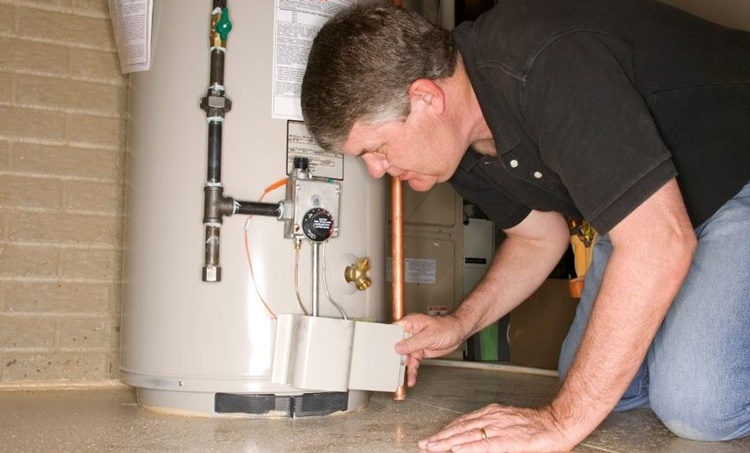Key Maintenance Tips for Your Home's Hot Water System
Key Maintenance Tips for Your Home's Hot Water System
Blog Article
Are you currently in search of information and facts around Tips For Maintaining Your Hot Water Heater?

Hot water is necessary for day-to-day convenience, whether it's for a rejuvenating shower or cleaning meals. To ensure your warm water system runs successfully and lasts much longer, routine upkeep is key. This article provides sensible ideas and insights on how to keep your home's hot water system to avoid disturbances and expensive repair work.
Intro
Preserving your home's hot water system may seem difficult, however with a few straightforward steps, you can ensure it operates smoothly for several years to find. This guide covers everything from recognizing your warm water system to DIY maintenance ideas and knowing when to call expert help.
Value of Maintaining Your Warm Water System
Routine upkeep not only expands the lifespan of your warm water system yet likewise ensures it operates successfully. Overlooking upkeep can result in lowered efficiency, greater power expenses, and also early failure of the system.
Indications Your Warm Water System Needs Upkeep
Understanding when your warm water system requires attention can stop significant issues. Watch out for signs such as inconsistent water temperature level, strange noises from the heating unit, or corroded water.
Understanding Your Warm Water System
Prior to diving right into maintenance tasks, it's practical to understand the basic elements of your warm water system. Generally, this includes the hot water heater itself, pipelines, anode poles, and temperature controls.
Regular Monthly Upkeep Tasks
Normal monthly checks can help catch minor problems prior to they rise.
Flushing the Water Heater
Flushing your water heater eliminates debris build-up, improving performance and extending its life.
Monitoring and Replacing Anode Rods
Anode rods avoid rust inside the storage tank. Checking and replacing them when broken is essential.
Checking and Changing Temperature Level Setups
Readjusting the temperature level setups makes certain optimum efficiency and safety and security.
Do It Yourself Tips for Upkeep
You can do a number of upkeep jobs on your own to maintain your warm water system in top condition.
Checking for Leaks
On a regular basis check pipes and connections for leaks, as these can lead to water damages and greater costs.
Examining Stress Relief Valves
Evaluating the pressure safety valve guarantees it works appropriately and stops extreme pressure buildup.
Shielding Pipelines
Protecting hot water pipes reduces warmth loss and can conserve energy.
When to Call a Professional
While DIY upkeep is valuable, some concerns need professional proficiency.
Facility Problems Requiring Professional Aid
Instances include significant leaks, electrical troubles, or if your water heater is regularly underperforming.
Regular Expert Upkeep Perks
Professional upkeep can consist of comprehensive inspections, tune-ups, and ensuring conformity with security standards.
Verdict
Routine maintenance of your home's warm water system is necessary for performance, durability, and price financial savings. By following these pointers and understanding when to seek specialist assistance, you can ensure a reliable supply of hot water without unanticipated interruptions.
How to Maintain an Instant Hot Water Heater
Before tinkering with your hot water heater, make sure that it’s not powered on. You also have to turn off the main circuit breaker and shut off the main gas line to prevent accidents. Also turn off the water valves connected to your unit to prevent water from flowing into and out of the appliance. 2. When you’re done, you have to detach the purge valves’ caps. These look like the letter “T†and are situated on either side of the water valves. Doing so will release any pressure that has accumulated inside the valves while at the same time avoid hot water from shooting out and burning your skin. 3. When the purge valves’ caps are removed, you have to connect your hosing lines to the valves. Your unit should have come with three hoses but if it didn’t, you can purchase these things from any hardware or home repair shops. You can also get them from retail stores that sell water heating systems. Read the user’s manual and follow it to complete this task properly. When the hosing lines are connected, open the purge port’s valves. 4. You should never use harsh chemical cleaners or solutions when cleaning your unit. Make use of white vinegar instead. It should be undiluted and you’ll probably use about 2 gallons. 5. Now flush your water heater. This task should probably take about 40 minutes. We can’t give you specific directions for this because the procedure is carried out depending on the type, model and brand of your heater. With that being said, refer to the user’s manual. 6. When you’re done draining the unit, you have to turn off the purge port valves again. Remove the hosing lines that you earlier installed on each of the water valves. Put the valve caps (purge port) back in their respective places and be very careful so as not to damage the rubber discs that are found inside these caps. 7. Now that everything’s back in place, check your user’s manual again to find out how to reactivate your water heating system. 8. Once it is working, turn one of your hot water faucets on just to let air pass through the heater’s water supply pipes. Leave the tap on until water flows smoothly out of it. https://www.orrplumbing.com/blog/2014/september/how-to-maintain-an-instant-hot-water-heater/

I discovered that piece about What Kind of Maintenance Do Water Heaters Need? when looking around the search engines. Those who enjoyed reading our page please remember to pass it around. Many thanks for taking the time to read it.
Get A Free Quote Report this page